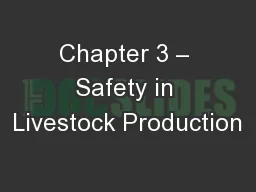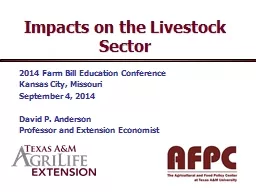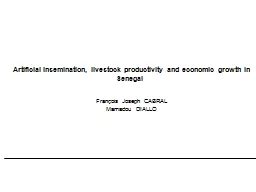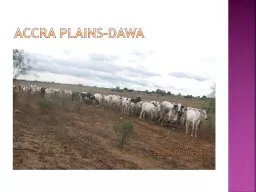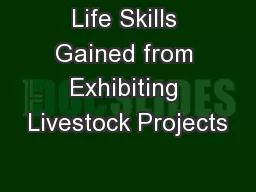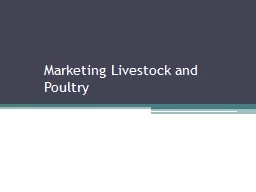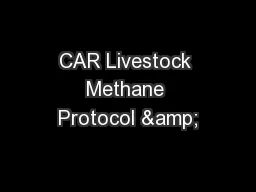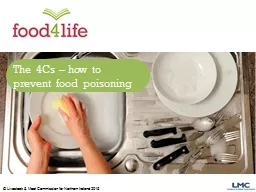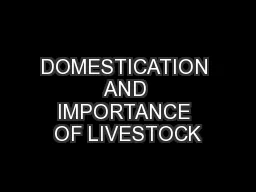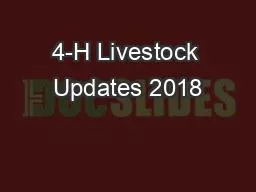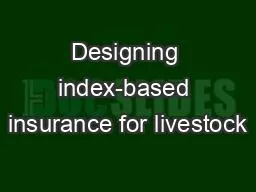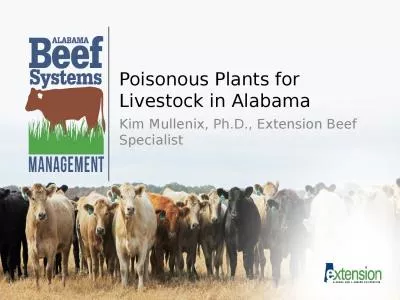PPT-Chapter 3 – Safety in Livestock Production
Author : stefany-barnette | Published Date : 2018-09-26
Animal Science Why is it important to be safe when working with farm animals For the protection of the animal and human workers Most situations are or can be life
Presentation Embed Code
Download Presentation
Download Presentation The PPT/PDF document "Chapter 3 – Safety in Livestock Produc..." is the property of its rightful owner. Permission is granted to download and print the materials on this website for personal, non-commercial use only, and to display it on your personal computer provided you do not modify the materials and that you retain all copyright notices contained in the materials. By downloading content from our website, you accept the terms of this agreement.
Chapter 3 – Safety in Livestock Production: Transcript
Download Rules Of Document
"Chapter 3 – Safety in Livestock Production"The content belongs to its owner. You may download and print it for personal use, without modification, and keep all copyright notices. By downloading, you agree to these terms.
Related Documents

